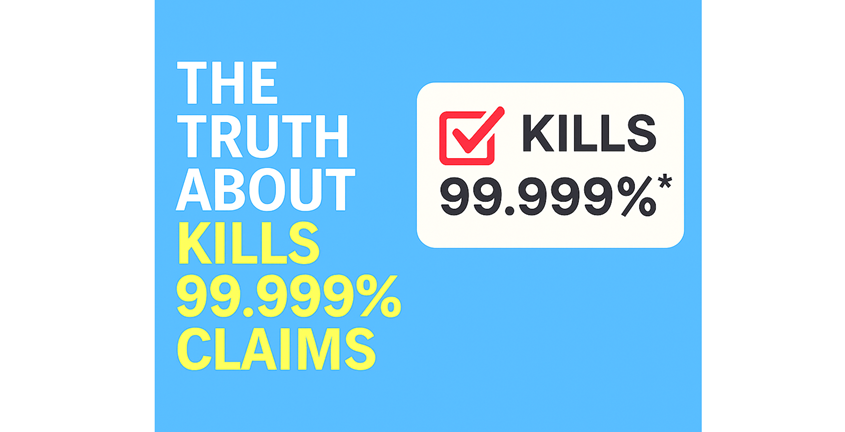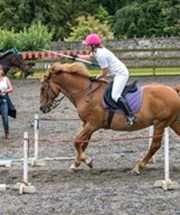The Truth About Kills 99.999% Claims...

🧼 Deep Dive: The Truth About “Kills 99.999%” Claims
Walk down any cleaning aisle or browse online suppliers, and you’ll see bold claims like “Kills 99.9% of germs” or “99.999% effective.” These numbers aren’t just marketing fluff - they’re based on microbiological testing standards. But the difference between 99.9% and 99.999% is more than just a few decimal places. It’s the difference between adequate and exceptional microbial kill rates.
Let’s explore what these claims mean, how they’re tested, and why they matter for your business.
🔢 What Do the Percentages Actually Mean?
These percentages refer to the log reduction of microorganisms — a scientific way of measuring how many bacteria are killed during disinfection.
| Log Reduction | % of Bacteria Killed | Survivors per Million |
|---|---|---|
| 1-log | 90% | 100,000 |
| 2-log | 99% | 10,000 |
| 3-log | 99.9% | 1,000 |
| 4-log | 99.99% | 100 |
| 5-log | 99.999% | 10 |
So when a product claims to kill 99.999%, it’s achieving a 5-log reduction - meaning only 10 bacteria out of 1 million survive. That’s a significant difference in high-risk environments like hospitals, food prep areas, or care homes.
🧪 How Are These Claims Tested?
In the UK and EU, disinfectants must meet specific BS EN standards to make these claims. Here are the most relevant ones:
✅ BS EN 1276
-
Applies to: Bactericidal activity in food, industrial, domestic, and institutional areas.
-
Test conditions: Products are tested against common bacteria like E. coli, Pseudomonas aeruginosa, Enterococcus hirae, and Staphylococcus aureus.
-
Requirement: Must achieve a 5-log reduction (99.999%) within a specified contact time (usually 5 minutes or less).
✅ BS EN 13697
-
Applies to: Surface disinfectants.
-
Test conditions: Evaluates efficacy on hard surfaces under dirty conditions.
-
Requirement: Also requires a 4- or 5-log reduction depending on the microorganism and intended use.
✅ BS EN 14476
-
Applies to: Virucidal activity.
-
Requirement: Products must demonstrate effectiveness against viruses like norovirus or influenza.
These tests are conducted in controlled lab environments, often under both clean and dirty conditions (with organic matter present), to simulate real-world use.
⚠️ What to Watch Out For
Not all “99.999%” claims are created equal. Here’s what to look for:
-
Is the claim backed by a BS EN standard? If not, it may be marketing spin rather than verified efficacy.
-
What’s the contact time? A disinfectant might kill 99.999% of bacteria - but only after 10 minutes. That’s not practical for fast-paced environments.
-
What organisms were tested? Some products only test against easy-to-kill bacteria. Look for broad-spectrum efficacy.
-
Is it tested under dirty conditions? Real-world surfaces aren’t sterile. Products should be effective even with organic matter present.
🧤 Why This Matters for Your Business
-
Food Safety: In kitchens, a 5-log reduction can mean the difference between safe food and a bacterial outbreak.
-
Healthcare Compliance: Care homes and clinics must meet strict hygiene standards - BS EN 1276 compliance is often mandatory.
-
Reputation & Liability: Using verified products protects your staff, customers, and brand.
✅ Astral Hygiene Tip
We only stock disinfectants that meet rigorous BS EN standards - and we’re transparent about contact times, tested organisms, and conditions. If you’re unsure whether a product meets your needs, just ask. We’ll help you choose the right one for your environment.








